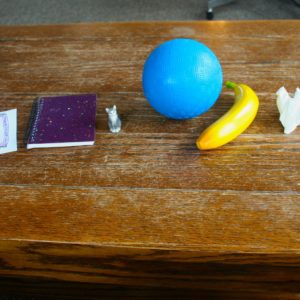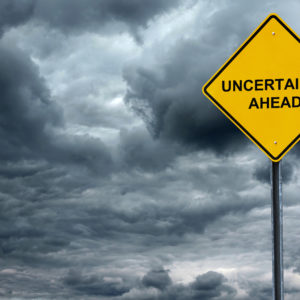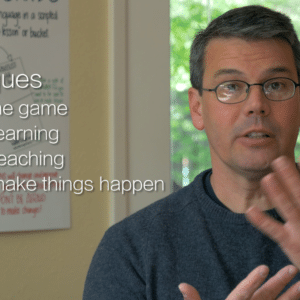
The white room in the Matrix – totally shapeable to the needs of the learner, and able to eliminate all variables and distraction.
To maximize the players’ experience of “Obviously!”, we intentionally “Set-up!” as much of the environment as possible, removing variables and distraction, focusing their attention on play.

“I don’t think we got set up, I know we got set up! I mean, really, seriously, where did all those cops come from, huh?” – the Usual Suspects (1995)
TQ “Set-up” is a tongue-in-cheek reference to the idea that you can be in the middle of a completely designed situation and not even know it, even after the trap is sprung.
In WAYK, we aim to create a flow experience where group success and engagement are ongoing during practice of the skill. To create and maintain this experience we must create and maintain the environment that drives this experience.
We set-up both a learning environment, and a learning laboratory. Every game is an experiment, in which we control as many variables as possible, in order to reliably innovate techniques that further accelerate learning.
This also allows experienced players to know exactly what is coming up next; the conversation is so well designed, the variables are so well controlled for, that sometimes to illustrate tq set-up we tell players “we planned every word in this conversation you just had years ago – including what you didn’t even know you were going to say.” And it’s essentially true. The more you practice set-up, the more you develop an eye for well-designed set-ups everywhere.
In classic games like Chess, Poker, Go, Backgammon and so on, you’ll notice highly controlled, high-contrast, clearly delineated, iconic play pieces and surfaces. These are great examples of time-tested set-up; players can focus all their attention on play, rather than on resolving ambiguities.
An iconic application of set-up is the white room in The Matrix, where the heroes have access to an imaginary space totally shapeable to the needs of the learner, able to eliminate all variables and distraction.
Every environment is assumed to influence or drive human behavior in some fashion; WAYK players explore and innovate what behaviors, and therefore what environments, will most accelerate learning.
Design your experiences by designing your environment.
Introducing the technique
Short: “Technique: Set-up. We always set-up our play surface so that it’s clear of any other objects or distractions. We want to create a set-up that makes everything obvious as possible.”
Applying the technique
Set-up the play environment to limit distraction, and to create a situation where players always obviously! know what to do next.
- Drive play with the Total Physical Response of actual objects in the actual environment referred to by the language.
- Create environment where players are tq Warm/Fed/Rested/Safe/Willing, to ensure that players have the psychological, emotional, and physical resources necessary for accelerated learning. Do Food for hungry players.
- Look at the play environment at a room level with a WAYK Eye to limit anything that will tax the attention – clutter, dirt, distraction, chaos.
But what about…?
New game leaders and players may express displeasure at the extreme measures we taking in setting-up a game. It can seem like over-kill – do we really need to go to such great lengths to design the play environment?
- TQ OCD – the extent to which we accelerate learning is in direct proportion to the amount of techniques we apply and the extent to which we apply them.
- But we need to also learn to wield these techniques in tq Bite-sized Pieces, one technique at a time.
- TQ Everybody Plays All-the-time with TQ Whatever Works – play with whatever you have. If you have an impromptu game in a cofee shop, there will be a cup of coffee on the table, and the noise of a crowd. On a bus, there’s no table, and everything shakes, and you’re looking for your stop. If you’re walking, you’re holding pens in my hand. Play with the resources and time available.
- One the one hand, TQ Fluency Hunters are skilled wielders of an array of OCD techniques that they employ zestfully, and without hesitation; we like to say, “You know you’re really language hunting when it feels inconvenient.”
- On the other hand, TQ Let it Go; though we spend a lot of time thinking about how to scale WAYK up, to the best possible game we can imagine, we also scale WAYK down, to do the best we can with what is available.





On the one hand, I really appreciate this sort of thing- I am the sort who tries to set up experiences for people- when I run an RPG, I try to get everything just so, for instance.
That said, it’s really discouraging to someone like me who once envisioned WAYK as “this totally cool thing you can just do ANYWHERE at the drop of a hat”. I like immaculately designed experiences when I can get them, but if I need to run an RPG off the top of my head with just a handful of dice and some notecards, I can do it. WAYK is rapidly evolving away from something I feel like I can grasp on to, and as it does, my practical interest wanes. I’m still interested in following its progress on an intellectual level, but it becomes more and more something I find neat, and less and less something I can see myself actually participating in.
I find that really sad =/
Dave/oberon,
Thanks for your thoughts.
There is a theme that goes throughout WAYK, that maybe one could sum up as “excellence” and “mastery”. The goal is to bring these accomplishments into practical reach, for any person on the street to be able to wrap their head around a folksy, community-oriented system for achieving excellence and mastery a simple proposition.
That being said, we haven’t ourselves mastered how to present this over the internet in a way that works as well as in person. I don’t know if we ever will; I certainly plan to keep improving the cyber-presentation, but I’m much more focused on in-person language hunting itself.
Your comment gets me thinking of “bite-sized pieces” – if the level of participation for you, that is satisfying, is just watching from a distance for a while, then I say go for it. You’re essentially in the Meadow, and if later it makes sense to bring WAYK play into your life, then that’s great. If not, that’s okay too.
I suspect if you lived near a regular WAYK play group, a lot of these issues would evaporate – the grounded, simple nature of the game would come through, and the part focused on super-performance and immaculate game design would be available later, but not so overwhelming as an initial concept.
So I’m sad too that it’s difficult to share WAYK over the internet, and I know for certain we have lost a lot of players because of it, including you. In the long run, in-person play, game by game, will slowly spread WAYK wherever it needs to go. Perhaps we’ll bump into each other some day at a gathering and get our chance to play.
Until then, please keep participating in the way that feels good and works for you; I do really value your support, even if it’s just intellectual appreciation.
I think you guys are doing a hell of a job putting this on the web as much as you are. Don’t think I’m knocking the system or the effort- it is what it is, and it works the way it works, and I still think it’s cool. And like I said, I’m keeping my finger on the pulse, so when WAYK spreads out in my direction (geographically and metaphorically, of which I have no doubt on either score), I’ll be waiting for it.
I definitely plan to play again at GenCon 2011, and probably Forge Midwest as well. I’m not out of the game, just sitting on the bench for a while reading the playbook.
On the one hand, I am always asking myself how I can improve the “Set-Up”. The more I can improve it, the better the game will go. Is my table clean, smooth, in a light solid color? What are the best props for this language & this group of people? Etc.
On the other hand, I have to go with what works, here and now. If we’re in a coffee shop, there will be a cup of coffee on the table, and the noise of the crowd. On a bus, there’s no table, and everything shakes, and we’re looking for our stop. If we’re walking, I’m holding pens in my hand. I will take what I can get.
When I plan WAYK, I will bring my best pens, rock, and stick. But with an impromptu game, I have to pick from the props available to me at the time, like your RPG with just some dice and note cards.
We spend a lot of time thinking about how to scale WAYK up, to the best possible game we can imagine, and that can be intimidating. But we also scale WAYK down, to do the best we can with what is available.
Fair enough.
Jay,
I think this answer should go on the wiki for Set-up! This is exactly what I want to have had said. Haha.
Certainly if Set-up seems too intimidating or OCD, this for me sums up the situation – plan for great games, but don’t pass impromptu games by because you can’t do them perfectly.
yrs,
Willem
Jay,
I’ve updated the “But what about…” text with the help of your comments. I think this is an easy to miss point. Thank you for helping keep it “obviously!”.
Sorry, I just realized this was probably not the best place for a discouraged/discouraging comment. My bad. Feel free to remove it if you feel it’s disruptive to the peace.
Maybe I’m just an obsessive person, but to me OCD “Set up” adds to the fun. Sure there are the awkward moments the first few times you insist on getting everything off the table, or on only asking the question that will make the “same rotation” work. But I’ve played just enough to realise technique “Shaving pennies (Superman III)”: every bit of set-up you can clean up counts to keep the game flowing longer, delaying that moment when the hand hits the chin “full” and over the long run getting everybody to fluency sooner.
Perhaps the opening “set up” is a little ritual that opens, marks out space for this game, this tq “same conversation” as something worth attending to.
In practice the technique “Set-up” doesn’t stop me from playing. I wouldn’t not play because I didn’t have the right table, but I [i]would[/i] use my developing “WAYK eye” to choose the best table in the room, and face in the best direction. I have the right pens in my pocket, and a slowly building desire to obtain a light blue tablecloth…
We played Latin with a pool-table-green tablecloth and it was GREAT !
I think the easiest way to understand how to wield WAYK to its greatest fun and efficiency is to begin by just playing or doing whatever it is that you are doing. Then take a peek at the top 20 techniques list and see if any are within your grasp or understanding. The next time you do “your thing” can you incorporate one of the techniques? If you can then you are now “playing WAYK”… You are now playfully adapting a WAYK technique to your thing. See what happens… did it work? Your thing will be more fun because it is easier to play/participate/share/collaborate. And not just more fun for you but for the people who enjoy doing your thing with you.
For me the “fun” of WAYK is seeing how small of a change can have the biggest impact on the fun the group is having. Does a blue or green tablecloth make the event more fun? Let’s see!
Just thinking of the color of tablecloth is enough to get sliding down the slippery slope of “set-up”. Because I have played SOOOOOO many games with and without tablecloths I know that more people have more fun with tablecloths than without. So I try to have one on me at all times. I am setting everyone up to have the most fun possible. But (like Jay said) I may not have the chance to pull out the tablecloth if I’m in line at the store and I want to play with the person in line with me… So I make sure I have “set-up” the next best thing… having the most obvious props in my pocket to make up for not having the tablecloth. Now I am really playing. I am using everything I know to have the best 30 seconds of my life. Sometimes I have great fun and laughter… Sometimes not so much. But I am always looking for a better “set-up” to make the best case scenario happen TQ “kindergarten soccer”. A mass of people laughing and teaching and learning all around me where ever I go.